#incan art
Explore tagged Tumblr posts
Text
Inca Maiden
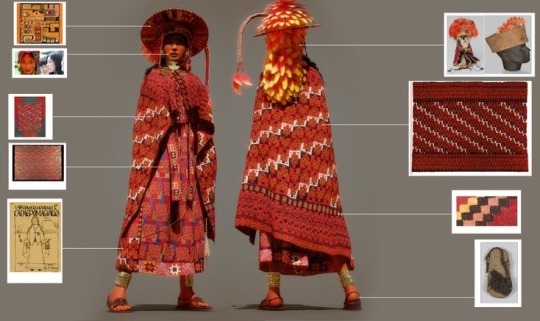
The clothes shown here correspond to the Chuquibamba style, an allied kingdom of the Inca empire
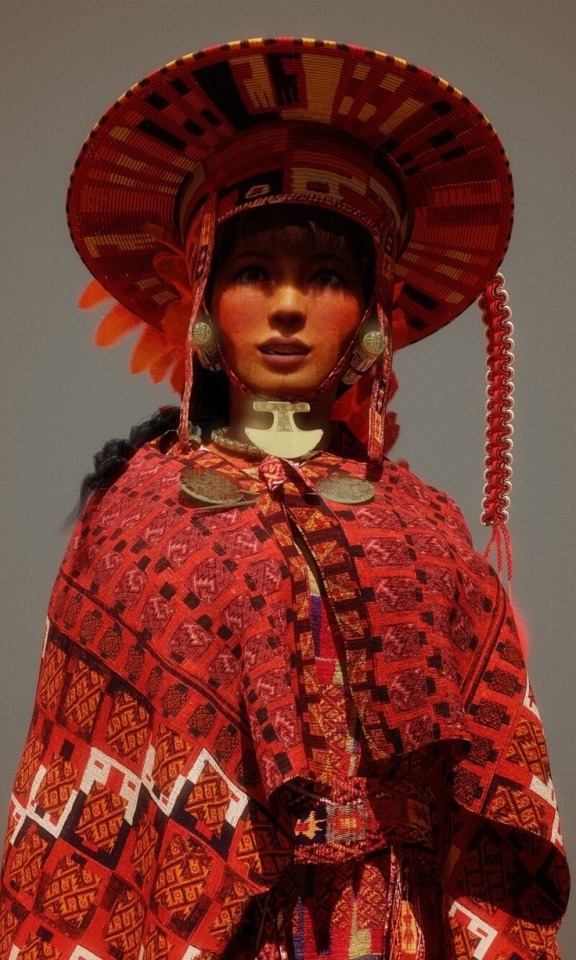
The acllas in the Tahuantinsuyu*, were the women of greater cultural preparation. These women were recruited and then chosen to be prepared in the so-called Acllahuasis, which were in charge of the Mamaconas, as stated by the chronicler Bernabé Cobo:
"... the acllahuasi or house of chosen women was an institution that brought together the Mamaconas or Ladies Mothers who acted as teachers and a credible number of girls entering a closing regime between the ages of ten and twelve. They were collected as a tribute among the most noble and beautiful ... "
Source
*Empire of four (the Inca empire)
#incan#inca#inca culture#incas#Inca Maiden#Maiden#Acclahuasi#Mamacona#tahuantinsuyu#Chuquibamba#incan art#pre columbian#peru#inca empire#ladie mothers#ancient history#ancient america#priestess#royality#noble woman#aclla#acllas
20 notes
·
View notes
Text
Given how uncomfortable ear stretchers look and make me feel, it's sorta healing to see them in a better cultural context than Hot Topic.
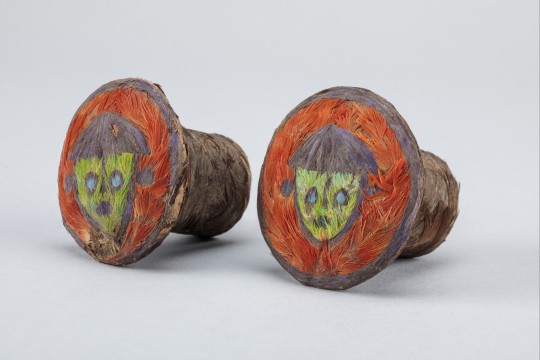
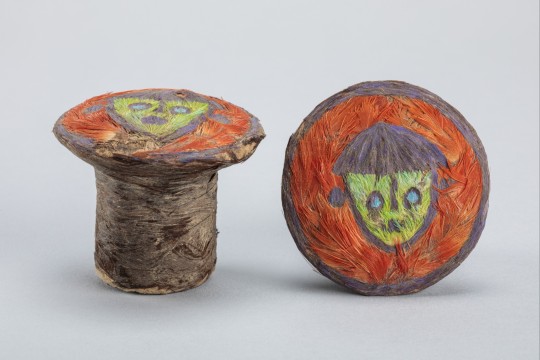
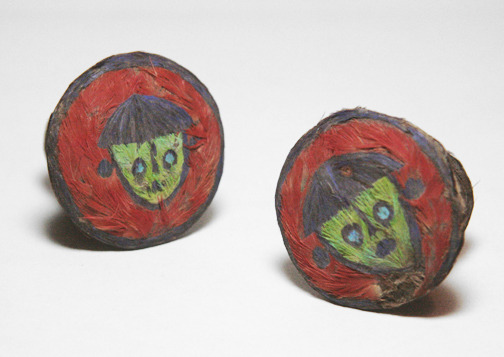
~ Pair of Ear Spools.
Date: A.D. 1000-1470
Place of origin: Central Coast, Perú
Culture: Chancay or Inca
Period: Late Intermediate-Late Horizon
Medium: Feathers, adhesive, gourd, and leather.
613 notes
·
View notes
Text
Some of the best 'Inca inspired' masks that my 3rd graders made for multicultural day.
(medium- pasta, beans, spray paint, on poster board)










1 note
·
View note
Text
Peruvian whistling vessels simulating animal calls (some of the oldest found date to c. 500–300 BCE)
#Peru#Peruvian#whistling vessels#animal vessels#archaeology#history#ceramics#Inca#Incan#art#sculpture#animal calls
28K notes
·
View notes
Text
500-year-old Snake Figure from Peru (Incan Empire), c. 1450-1532 CE: this fiber craft snake was made from cotton and camelid hair, and it has a total length of 86.4cm (about 34in)
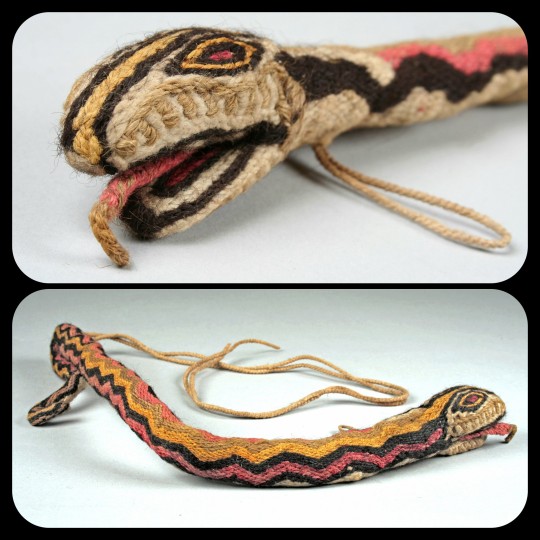
This piece was crafted by shaping a cotton core into the basic form of a snake and then wrapping it in structural cords. Colorful threads were then used to create the surface pattern, producing a zig-zag design that covers most of the snake's body. Some of its facial features were also decorated with embroidery.
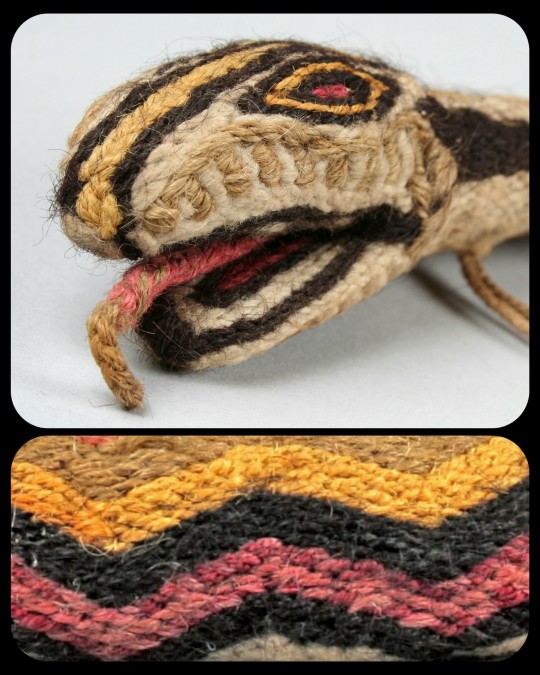
A double-braided rope is attached to the distal end of the snake's body, near the tip of its tail, and another rope is attached along the ventral side, where it forms a small loop just behind the snake's lower jaw. Similar features have been found in other serpentine figures from the same region/time period, suggesting that these objects may have been designed for a common purpose.
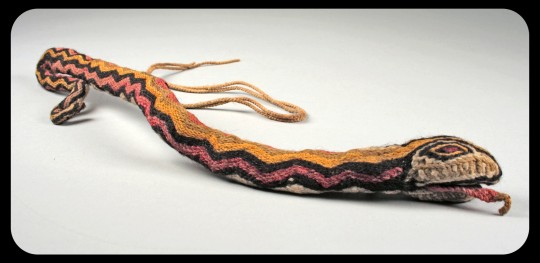
Very little is known about the original function and significance of these artifacts; they may have been created as decorative elements, costume elements, ceremonial props, toys, gifts, grave goods, or simply as pieces of artwork.
The Metropolitan Museum of Art argues that this figure might have been used as a prop during a particular Andean tradition:
In a ritual combat known as ayllar, snakes made of wool were used as projectiles. This effigy snake may have been worn around the neck—a powerful personal adornment of the paramount Inca and his allies—until it was needed as a weapon. The wearer would then grab the cord, swing the snake, and hurl it in the direction of the opponent. The heavy head would propel the figure forward. The simultaneous release of many would produce a scenario of “flying snakes” thrown at enemies.
The same custom is described in an account from a Spanish chronicler named Cristóbal de Albornoz, who referred to the tradition as "the game of the ayllus and the Amaru" ("El juego de los ayllus y el Amaru").
The image below depicts a very similar artifact from the same region/time period.

Why Indigenous Artifacts Should be Returned to Indigenous Communities.
Sources & More Info:
Metropolitan Museum of Art: Snake Ornament
Serpent Symbology: Representations of Snakes in Art
Journal de la Société des Américanistes: El Juego de los ayllus y el Amaru
Yale University Art Gallery: Votive Fiber Sculpture of an Anaconda
#artifacts#archaeology#inca#peru#anthropology#fiber crafts#americas#pre-columbian#andes#south america#art#snake#effigy#textiles#textile art#embroidery#history#stem stitch#serpent#amaru#mythology#andean lore#fiber art#incan empire#indigenous art#repatriation#middle ages#flying snakes tho
857 notes
·
View notes
Text
He's so adorable, I had to draw him.

You go, tiny silver llama.


Tiny silver llama, Incan, circa 1400-1534
from The Walters Art Museum
471 notes
·
View notes
Text
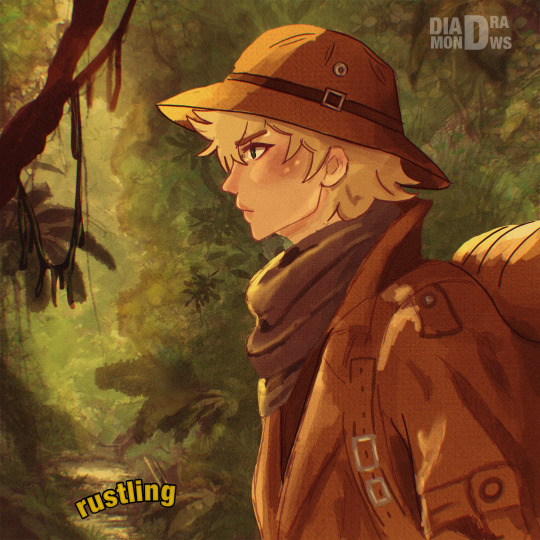
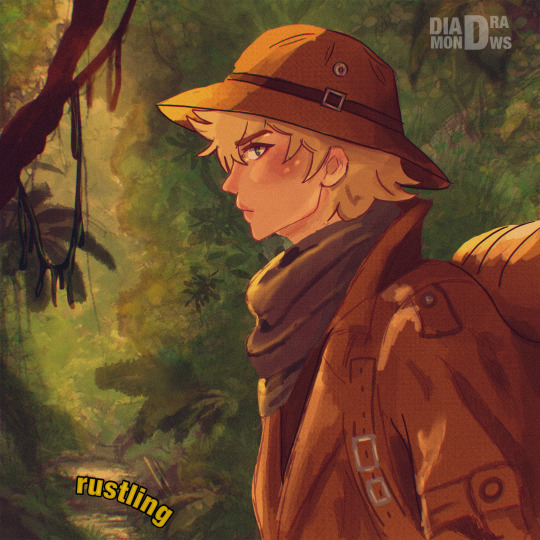
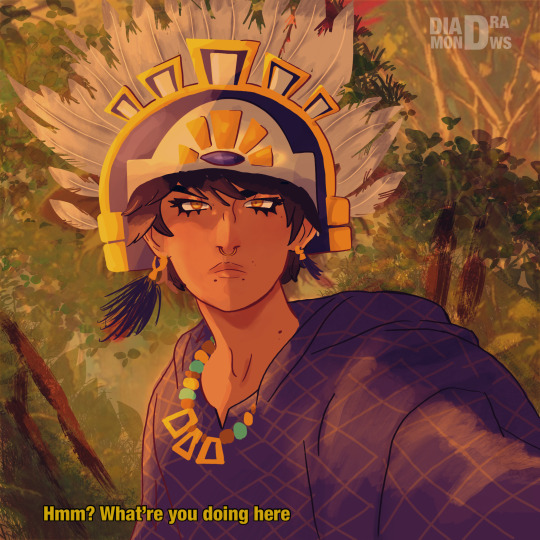

Incan Craig x Archaeologist Tweek
#my art#south park#south park fanart#fanart#sp fanart#tweek tweak#creek#sp creek#incan craig#Craig tucker#sp craig tucker
183 notes
·
View notes
Text

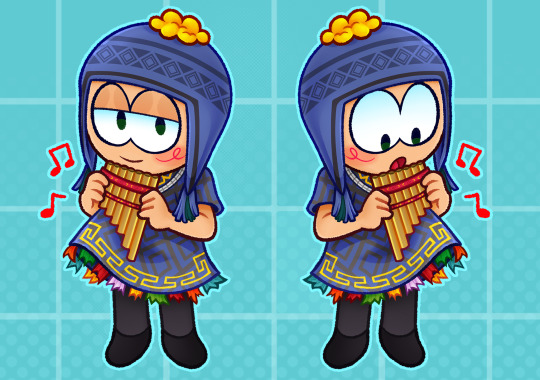
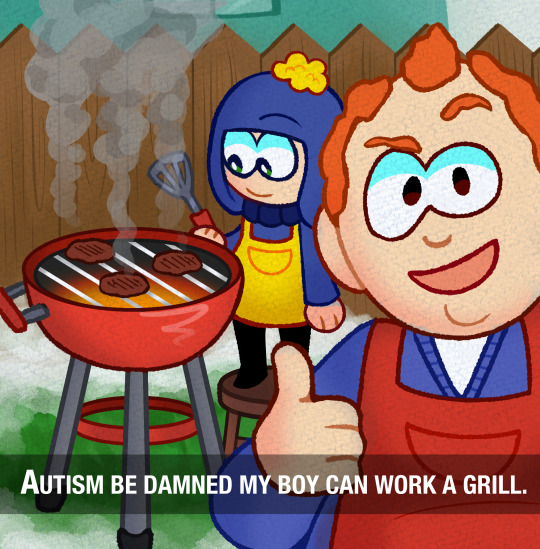
One time I turned in a South Park fanfic for my English final, and got full credit (it was creek)
#krillerfiller#craig tucker#south park craig#south park#south park art#south park fanart#south park phone destroyer#incan craig#peruvian craig#sp craig tucker#sp craig#thomas tucker#sp fandom#sp fanart#craig south park#south park memes#guys guys there’s no way you can guess my fave sp character#literally impossible /s
6K notes
·
View notes
Text





Art I did on gartic phone
#my art#gay#fanart#south park#sp#craig tucker#craig x tweek#creek#south park creek#sp craig#phone destroyer#south park phone destroyer#south park tweek#tweek tweak#i forgot about tumblr oops#Incan craig#Chubby tweek#outlaw tweek#Feldspar#barbarian tweek
184 notes
·
View notes
Text

art for @miranda-ska
inspired by traditional andean art
#art#artists on tumblr#small artist#furry#furry art#artwork#deity#nguruvilu#cryptid#mythical creatures#fox#andean#inca#incan#mapuche#chile
32 notes
·
View notes
Text

E'Njaura
God of Logos
Logos (λόγος) the divine wisdom manifest in the creation, government, and redemption of the world
E'Njaura is the patron deity of rationality and light. He protects creators, poets and all of academia.
Symbols: Day, Rubies, Fire.
[he is one if the three main gods from the dnd campaign I dm for my friends and is also very clearly inspired by Enjolras from Les Mis so if anything do consider this fanart lol]
#art#fanart#les mis#oc#les amis#les miserables#artists on tumblr#enjolras#dnd#dnd deity#btw if you think he looks like an inca deity of sorts it's because i will die on the latino!enjolras hill#also my muse is of incan descent so of course i will have the god of light be somewhat related to him
31 notes
·
View notes
Text
#rain forest#Inca#incas#Inca Culture#incan#incan Art#Inca textiles#textiles#textilart#textildesign#indegenous
0 notes
Text

❝ Capac Cuna Inca o Genealogía de los Incas (18th century) ❞
This canvas illustrates the “Inca family tree”. The Spanish monarchy of the time sought to legitimize its absolute power over the conquered territories. To this end, the Spanish were obliged to demonstrate that the conquest of Peru did not spell the end of the Inca dynasty, and that the kings of Spain were their only legitimate heirs. In this painting, the Holy Roman Emperor Carlos V appears as the successor to Atahualpa, and Carlos IV – the last king represented – figures as the 25th Inca emperor of Peru.
#charles v#atahualpa#inca#incans#amerindians#moors#indigenous peoples#south america#peru#conquest of peru#spain#new spain#new granada#new andalusia#kingdom of spain#spanish#spanish empire#catholicism#christianity#conquistadors#imperialism#colonialism#settler colonialism#colonization#paintings#art#18th century#1700's
9 notes
·
View notes
Text


“A llama?! He’s supposed to be dead!” 💜🍇✨
Yzma is the last portrait for my watercolor villains series, at least at the moment! I’ll do more off and on in the future but I’m not sure when I’ll get started or post them. Tomorrow I start posting a new type of watercolor artwork, a landscape! Since I’ve been taking lessons, I’ve been learning and improving! Enjoy! Length/Height: Nearly 12 Inches—Width: Nearly 9 Inches—This original artwork is up for sale for $41, DM to buy! DM for commissions and orders! Likes, comments, and shares are highly appreciated! ✩︎
#yzma#the emperors new groove#emperors new Groove#Eartha Kitt#disney fanart#disney art#disney#Peruvian#Peru#incans#Incan#art#artist#artwork#fanartis#fanart#my art#new artwork#traditional artist#traditional art#traditional artwork#small business#small business owner#small artist#disney villains#villains#disney villain#villain#watercolor painting#watercolors
23 notes
·
View notes
Text

IM BACK
I started a little early on spooktober, but I wanted to draw a drider oc I made!
Lore for him below the cut
I love goliath bird eater tarantulas; they're so fluffy, so out of the blue I wanted to make a drider based off that.
Since these spiders are native to South America, I wanted to reflect that with K'intu, and it got me thinking about the lore of driders in DND and how I could connect the two...
So essentially, here's what I've come up with, based off the fact that driders were drow cursed and shamed by their god:
➜ K'intu, from birth, was named after what he was supposed to be in Incan society: a ritual ingredient. Never able to live his life without the threat of his destiny looming over his head, K'intu had a rather isolated childhood, and when he turned 18, he was brought upon an alter to please his gods. Something went wrong. He still doesn't know what- but instead of simply dying like he should have, K'intu was transformed into a hideous monster, and hunted out of his home village from fear and disgust. He lives deep in the Peruvian jungle to this day- foraging and living away from the screams of humanity.
SOME NOTES:
I am aware that Incan society didn't sacrifice people on the scale the Aztec did, but the most important rituals in their religion did involve some human sacrifice.
K'intu literally means, "Ritual" in Incan (Quechua).
#spooky season#monster#drider#drider fanart#the inca#history#incan empire#spooky month#spooktober#halloween art#monster art#monster oc#creature design#creature art
13 notes
·
View notes
Photo

Incan Visitation - art by Jack Kirby (1975)
148 notes
·
View notes